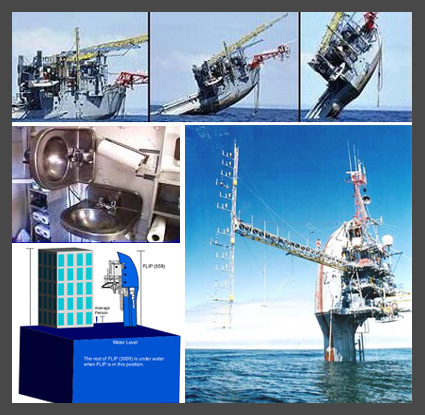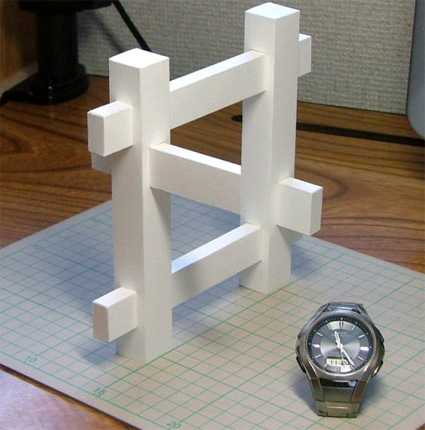
FLIP (or, Floating Instrument Platform) is an amazing ship – technically it isn’t a ship, but more like a buoy since it doesn’t have its own propulsion and has to be towed around – but I bet you though no other sea vessels in the world can do what it can – intentionally “capsizing” so that it can turn 90 degrees, and turn from “ship-mode” to a “platform mode” by flooding its tail:
During the flip, everyone stands on the outside decks. As FLIP flips, these decks slowly become bulkheads. (This is the name sailors use for walls.) The crew step onto decks that were, only moments before, bulkheads. Inside, decks have become bulkheads; bulkheads have become decks or overheads (ceilings).
Some of FLIP’s furnishings are built so they can rotate to a new position as FLIP flips. Other equipment must be unbolted and moved. Some things, like tables in the galley (kitchen) and sinks in the washroom, are built twice so one is always in the correct position.
The reason for the flip is the stability required to perform the scientific experiments that this vessel was designed for – measuring effects on the environment caused by long range sound propagation, research in geophysics, meteorology, physical oceanography, non-acoustic anti-submarine warfare, and in laser propagation experiments – having this design would enable FLIP to be towed to the desired location for the research while still having superior stability (which affects the precision and accuracy of readings) over conventional ships.
The video of the transformation:
I wonder how it turns back to the ship mode though – does it have to expel water from its ballast against the deep sea’s water pressure? Would that be too much? Then again, virtually all submarines do that with no problem…perhaps I’ve just answered my own question.
And their homepage: FLIP


